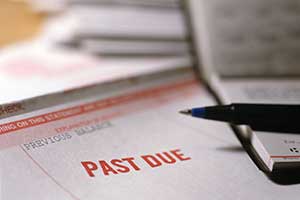
If you are an Ohio resident struggling to deal with debt, you might be wondering how your neighbors are faring so well. According to a survey by GOBankingRates.com, the top source of debt for people in Ohio is mortgage debt, and residents of 41 other states also reported that mortgages are the biggest source of debt. People who reported stated that their average mortgage debt was $59,500. This is despite the fact that Ohio has some of the lowest median mortgage payments in the country.
If you get behind on making your mortgage payments, you have reason to worry, as your lender could put your home into foreclosure. Fortunately, there are steps you can take to stop the foreclosure process.
The skilled and seasoned Ohio debt-relief attorneys at Fesenmyer Cousino Weinzimmer understand that financial problems can happen to even the most well-intentioned people. We offer a free consultation to examine your sources of debt and determine what you can do to avoid foreclosure, stop harassment from creditors, and put you on the road to financial recovery.
Mortgage Debt
When mortgage debt is too much to handle and you are in danger of foreclosure, your best bet may be to file for either Chapter 7 or Chapter 13 bankruptcy. This will stop the foreclosure process and also prevent utilities from being shut off, harassment from creditors, and garnishment of your wages. Not everyone can qualify to file for personal bankruptcy, so it makes sense to consult with an attorney to see if you are eligible and if bankruptcy is right for you.
Student Loans
After mortgages, student loans were the second-biggest source of debt for people who were surveyed by GOBankingRates.com. The survey found that Ohio residents are carrying some of the heaviest burdens.
Added together, American student loan debt amounts to more than $1.3 trillion. For those who have student loans, the median debt amount is $9,100. However, the online-survey website WalletHub says Ohio ranks near the bottom of states. We are 42nd in the nation. Many people are struggling to pay off their loans, even over age 50.
Part of the reason Ohio scored so low was because of the lack of grants and student jobs to help with costs while in school. If possible, it’s a good idea to reduce the amount of loans by making payments before they are due since interest starts accruing the day you sign for the loan, even before you graduate.
Medical Debt
Even if you’ve always been financially stable, and even if you have medical insurance, if you’re hit with a major medical problem, bills can mount up quickly to the point where you can no longer meet them. As a result, medical debt is the most common cause of bankruptcy in Ohio.
To make matters worse, people often take on additional credit-card debt to cover mounting medical bills, and since credit cards often charge high interest rates for unpaid balances, debt only mounts.
Credit Card Debt
The survey found that about 10 percent of Americans view credit card debt as their largest source of debt. People carry balances each month on multiple credit cards, and some pay just the minimum amount due and are not even aware of the high interest rate that comes along with it.
With annual rates of 20% or more, compounded monthly, interest charges keep mounting up, and big unpaid balances drag down your credit scores. To get out of debt, the best strategy is to pay more than the minimum payment, as much as possible.
What to do About Debt
If you have found yourself in a situation where debt is more than you can handle, there is help available to get you past this crisis and provide the fresh start you need. Bankruptcy is a legal way to have many debts forgiven. The most common types are Chapter 7 and Chapter 13.
Chapter 7 bankruptcy can discharge (eliminate) most or all consumer and/or business debts so they no longer have to be paid. Chapter 7 bankruptcy is over in a few months, so you can begin rebuilding credit quickly. You might have to sell property to help pay off creditors, but there are Ohio bankruptcy exemptions that cannot be sold, including clothing, cars, equipment used for work (like tools) and household furnishings. If you do not own a great deal of property, your possessions may be all be exempt, qualifying you for a “no asset” case.
Chapter 13 bankruptcy allows you to repay some or all of your debt affordably over a three- to five-year period. If you successfully complete the court-approved payment plan, the debts covered by the plan are discharged, and you may get to keep assets such as your house and car.
While many kinds of debts are discharged through bankruptcy, be aware that unless it would be an undue hardship for you to repay them, you would still be responsible for student loans.
Contact Us and Get Help
If you find yourself drowning in any kind of debt, take the first step toward debt relief and CONTACT US TODAY FOR A FREE INITIAL CONSULTATION.
During your consultation at Fesenmyer Cousino Weinzimmer, we will evaluate your entire financial situation and determine the best fit for your particular circumstances. We will make sure you are aware of all your options and help you decide on the path to a brighter future that makes sense in your individual case. We know the courts and the system and will walk you through the process every step of the way.
Delaying can only worsen your situation, so call the Ohio bankruptcy attorneys at Fesenmyer Cousino Weinzimmer today. Call one of our conveniently located office branches at 614-228-4435 (Columbus), 937-222-7472 (Dayton), or 877-654-5297 (Cincinnati) or email for your free consultation so we can determine what debt relief solutions will work best for you.


